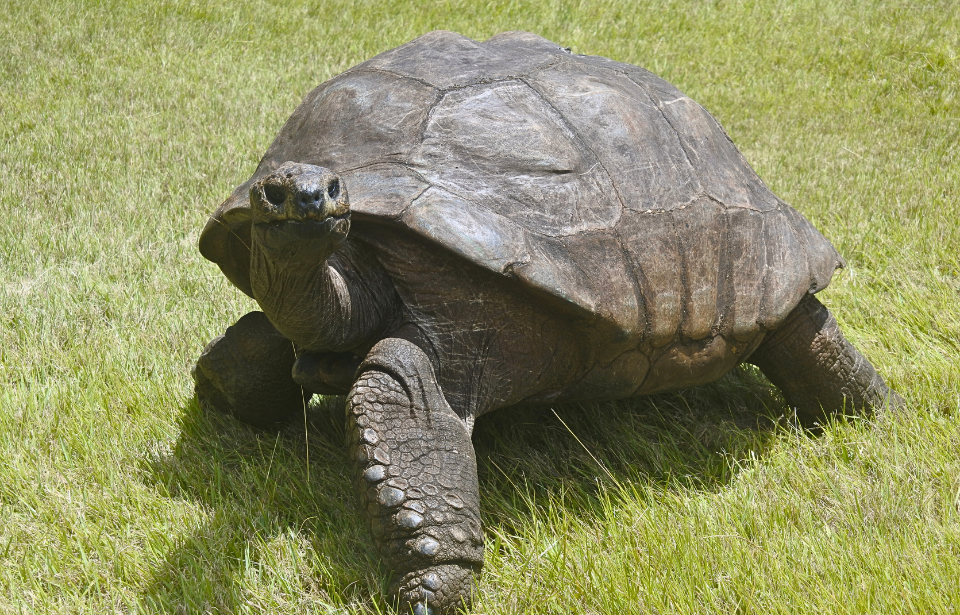Jonathan, an inimitable Seychelles Giant Tortoise, was recently distinguished with the Guinness World Record for being the world’s oldest animal to walk, or rather sprawl, on Earth. He is the approximate age of 191 as of 2023, having been hatched in 1832. This means that Jonathan lived through multiple eras, such as the time when the world did not yet have the telephone, photography, or even the light bulb.
Jonathan the tortoise
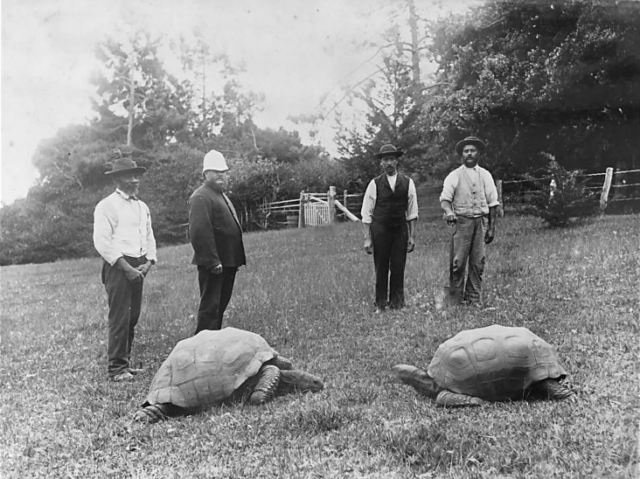
Born on the small African island nation of the Seychelles, located in the Indian Ocean, Jonathan was relocated to a new home in 1882, at the age of around 50. He was moved to the tropical island of St. Helena, a British overseas territory in the South Atlantic, as a gift to St. Helena’s Plantation House, the official residence of the island’s Governor.
Jonathan has shared his home with several other tortoises there, both males and females. However, he has not produced an offspring as no mating match is among the female tortoises. The females belong to the Aldabra giant tortoise group, different from Jonathan’s kin.
He’s older than expected
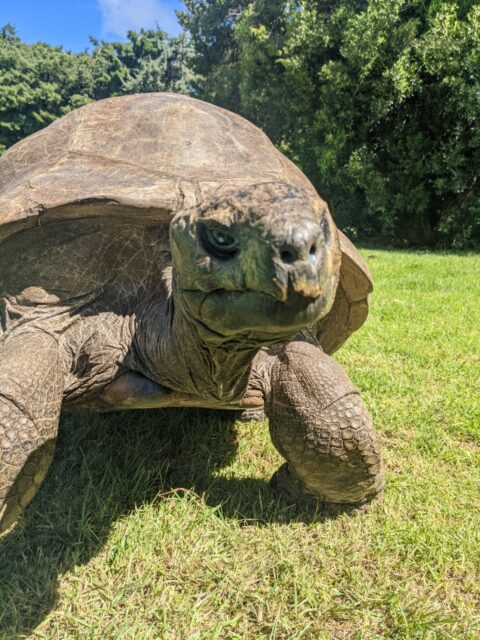
The average life expectancy of Seychelles giant tortoises is around 150 years. But at 187-years-old, Jonathan has stolen the title of oldest ever reptile of the order Testudines, which includes all tortoises, turtles, and terrapins. Jonathan has eclipsed the former title holder, Tu’i Malila, who was a radiated Madagascar-born tortoise that Captain James Cook gifted to the Tonga royal family and who lived from 1776/1777 until 1965 (or at least 188 years of age).
At the Plantation House, Jonathan has come to enjoyed something of a celebrity status. Visitors regularly pose for a picture with him. However, old age has left Jonathan’s vision and smell impaired, though his overall health is quite good. He is also nourished with foods appropriate for his age — fruits and vegetables including apples, cucumbers and carrots. A diet of only leaves and grass found on the ground is considered not so healthy for advance-aged tortoises.
Putting his age into context
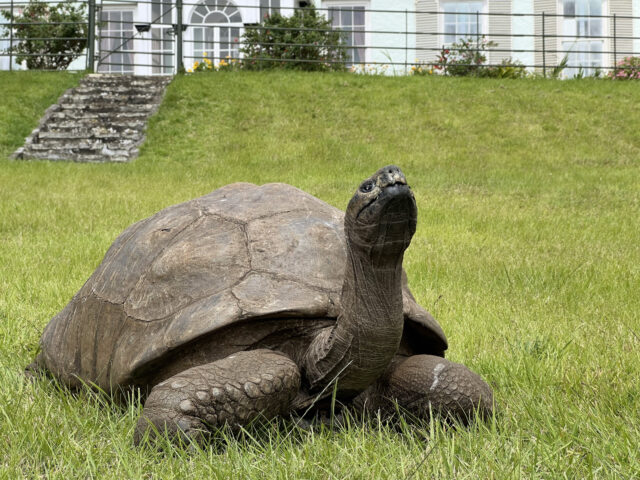
To put a wider perspective on how long Jonathan has lived: he would have hatched some six years before Queen Victoria was crowned the Queen of the United Kingdom of Great Britain and Ireland, in 1838, when she was just 19. He not only outlived her reign, but also those of the next five monarchs — Edward VII, George V, Edward VII and George VI, and even Queen Elizabeth II. At this rate, there is a chance he might even outlive King Charles III.
Guinness World Records, which acknowledged Jonathan as the world’s oldest animal on land, further notes that he has “lived through many major events in modern-day history.” These include Britain abolishing slavery, Lewis Carroll’s beloved children’s novel Alice’s Adventures in Wonderland being published, and the women’s suffrage movement being formed.
He age long surpasses that of the oldest person to have ever lived
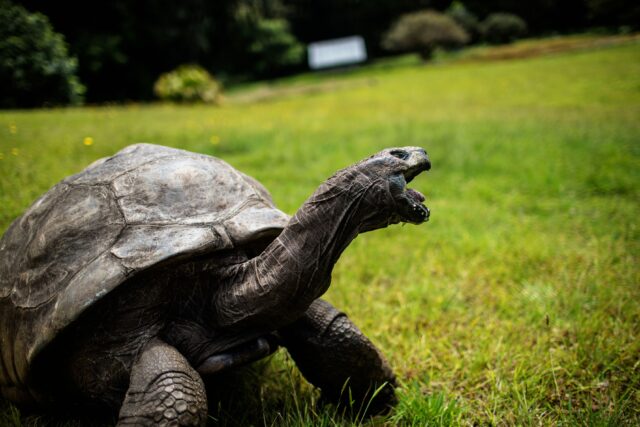
Jonathan’s current status as the oldest terrestrial animal means he has also outlived the oldest person ever by around 65 years. The distinction of which falls to a French woman, Jeanne Calment, born in 1875 and who died in 1997 at the age of 122 years and 144 days.
Once he dies, the government of St. Helena is set to greatly honor the life and times of Jonathan. In a treatment equal to any famous and important person in the world, an obituary reflecting his life will be distributed to news agencies. There is also a rumor that his shell will be preserved and that a sculpture depicting Jonathan will be erected in Jamestown, the capital of St. Helena.
There are few left of the species
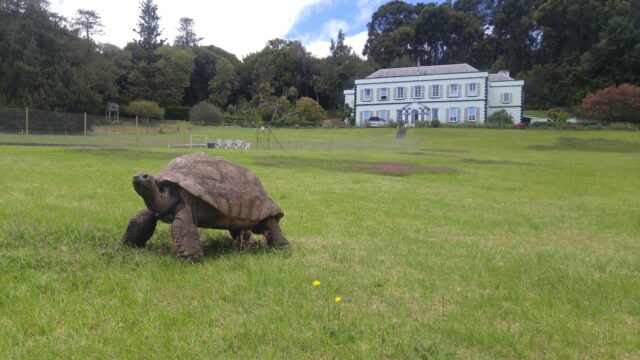
Jonathan is one of the few remaining Seychelles giant tortoises, a subspecies to the Aldabra giant tortoise. They were hunted to near extinction by European sailors back in the 19th century. A small surviving population is maintained under a breeding program on Silhouette Island in the Seychelles archipelago.
In contrast, the Aldabra giant tortoises are abundant. They number around 150,000 on Seychelles’ island of Aldabra, which is a greater count than the population of people on the islands. The Seychelles only has 94,000 human residents.
